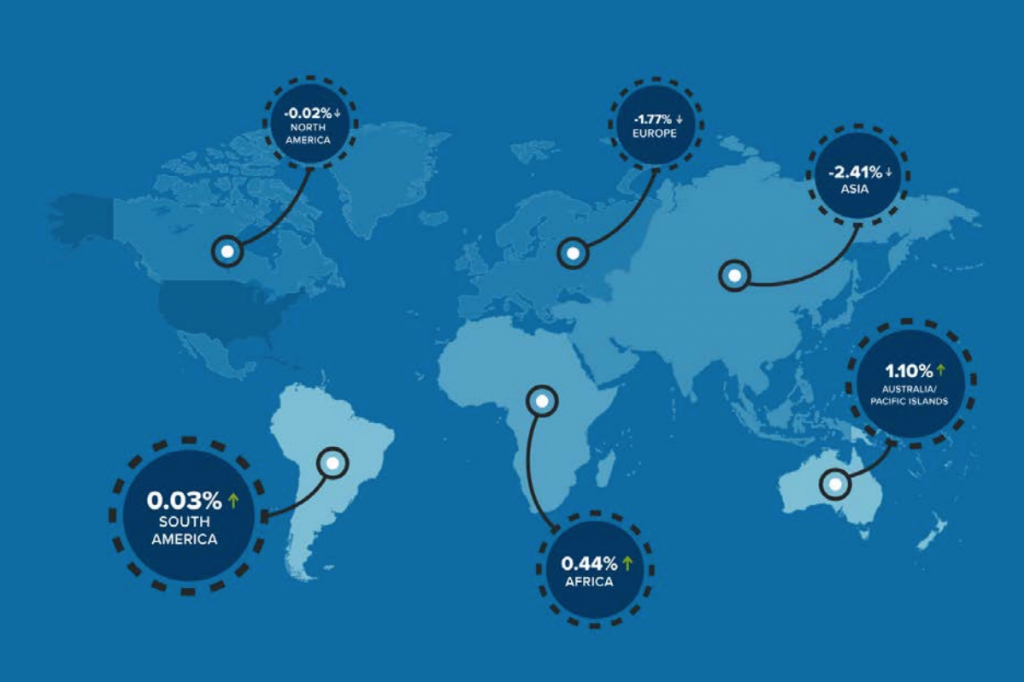The latest US Student and Exchange Visitor Program data has revealed that despite a slight decline in the number of visa-holding international students in 2019, the total number of records for active students in the country was 1.52 million, with 75% “calling Asia home”.
News and business analysis for Professionals in International Education
Have some pie!
US SEVP data shows further int’l student decrease in 2019
 New York, California, Texas, Massachusetts and Florida together welcomed 49.6% of all students. Photo: Unsplash
New York, California, Texas, Massachusetts and Florida together welcomed 49.6% of all students. Photo: Unsplash According to the Student and Exchange Visitor Information System, in 2019 international students on F-1 or M-1 visas for both academic and vocational studies hailed from 225 countries and pursued 1,353 different primary majors in the US.
Asia remained the top continent of origin for international students with 75% of the total
However, overall student records were down 1.7% in 2019, reaching a total of 1,523,758.
The report showed Asia remained the top continent of origin for international students with 75% (1,137,419) of the total in 2019 but marked a 2.4% (-28,063) decrease on 2018 figures.
SEVIS data showed that China (474,497), India (249,221) and South Korea (84,071) sent the largest number of students in both calendar year 2018 and 2019.
However, the number of students from these countries all saw a decrease in student records, with China down 4,235, India down 2,069 and South Korea seeing a drop of 4,796 in student records.
And while 48% of all active SEVIS records hailed from either China or India in 2019, “only Africa, Australia and the Pacific Islands, and South America saw growth in the number of students coming to the United States,” noted the report.
In the latest data, Europe slipped down a place to the third most popular continent of origin and, like Asia, it saw a decrease in the number of student records.
While Europe’s overall number of active F-1 and M-1 records decreased by 2,293 from 2018 (129,513) to 2019 (127,220), student record trends varied across different countries.
For example, student enrolment from Denmark (-319), Bulgaria (-126) and Luxembourg (-16) declined, while enrolment from Malta (+16), Kosovo (+38) and Albania (+153) increased.
Similarly, while the overall number of active records coming from Africa increased by 298, trends varied across different countries, with Western African countries like Ghana sending more students while Mauritania sent fewer. There were similar variations within Eastern African countries.
Regarding Australia and Pacific Island nations, there was a 1.1% increase from 2018. Some 96% of enrolments from this continent hail from Australia (7,303) and New Zealand (2,411).
Meanwhile, the number of students coming into the US from South America increased by 3,564 in 2019 (121,738), with growth from Dominica (+121), Nicaragua (+102) and Cuba (+19) helped to counterbalance the decrease in enrolment from Venezuela (-1,534).
“By contrast, there were no substantial changes in the five North American countries that sent at least 50 nonimmigrant students to the US in the reporting period,” the report explained.
SEVIS noted that the majority (86%) of international students on F-1 or M-1 visas pursued higher education degree programs in 2019, equating to about 1,306,869 records, which is on par with 2018 numbers.
China sent nearly 50% of all K-12 students in 2019
A total of 140,137 students that reported working via Optional Practical Training in 2018 (a decrease of almost 4% on 2018) and 72,168 in STEM OPT (up 3.6%), while 116,337 were engaged in Curricular Practical Training as part of their studies – a decrease of more than 23%.
In 2019, California hosted 294,657 nonimmigrant students, the largest percentage of nonimmigrant students (19.3%) of any state, which industry experts have suggested that due to the cost of flights and time to travel-perspectives “the West Coast is appealing to students in the Pacific Rim”.
With regards to K-12 programs of study, SEVIS reported 78,366 students were enrolled, with about 92% in secondary school programs (grades 9-12).
China sent nearly 50% of all K-12 students in 2019, followed by South Korea, Vietnam, Mexico and Brazil.
Still looking? Find by category:



